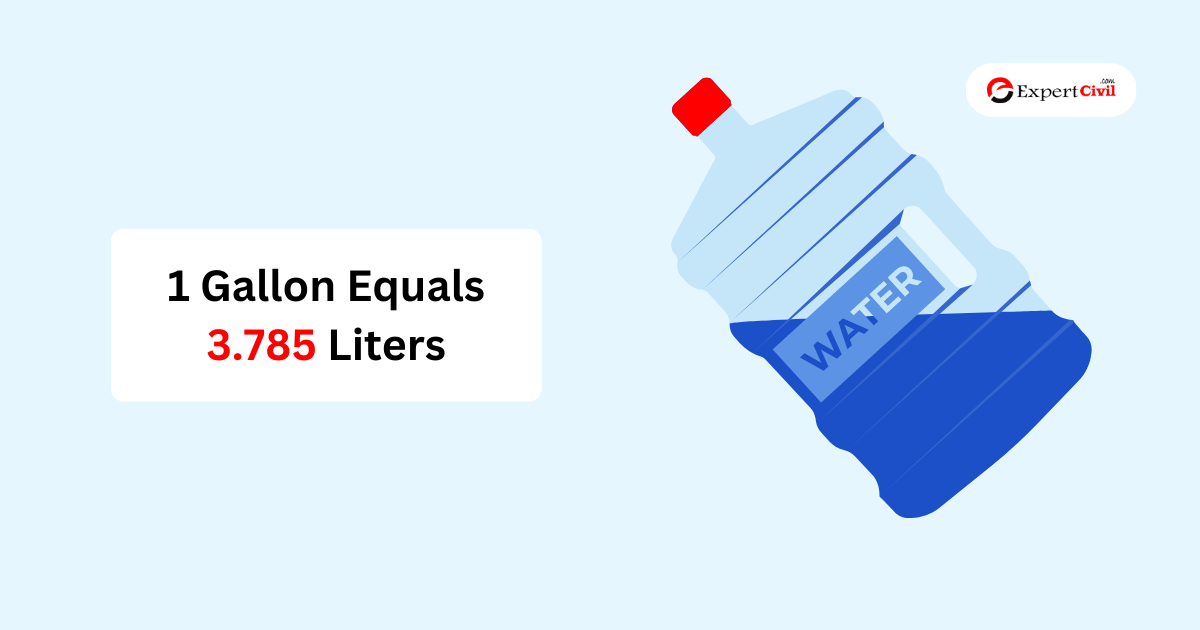Fluids are measured using different units of measurement around the world. In the United States, people typically use gallons to measure liquids, while in other countries, liters are more commonly used as the standard unit of measurement. It can be tricky to convert between these units, which can cause confusion. This article aims to clarify things by answering the question of how many liters are in a gallon and offering tips on converting between these two units of measurement.
What is Gallon?
To start, let’s clarify what a gallon actually is. It’s a unit of measurement used in the US and a handful of other countries to measure volume, particularly for liquids like water, milk, and gasoline. One US gallon is equivalent to 128 fluid ounces or 3.785 liters, so that’s a good benchmark to keep in mind when you’re converting between these units.

What is Liter or Liter?
In contrast to the gallon, the liter is the standard unit of measurement for volume in the metric system. This unit of measurement is used throughout the majority of the world, including in Europe, Asia, and South America. One liter is equal to 1,000 milliliters, and it’s important to note that 3.785 liters is the equivalent of one US gallon when converting between these two units.

How Many Liters in a Gallon of Water?
Technically, there are 3.785 liters in a gallon of water, which is important to know when converting between metric and imperial units.
How to Convert Liters to Gallons?
Converting between liters and gallons might seem challenging, but there are tricks to simplify the process. One method involves dividing the number of liters by 3.785 to convert to gallons. For example, imagine you have 7 liters of water and want to find out the equivalent volume in gallons. All you need to do is divide 7 by 3.785, which will give you a result of approximately 1.85 gallons.
How to Convert Gallons to Liters?
If you want to convert gallons to liters, it’s a pretty straightforward process. Just multiply the number of gallons by 3.785. For example, let’s say you have 2.5 gallons of gasoline and you want to know how many liters that would be. In this case, you would simply multiply 2.5 by 3.785, which comes out to approximately 9.46 liters.
Also check: How Many yards in a ton of Gravel, Sand, Cement, Rock, Asphalt, Mulch and Limestone
Frequently Asked Questions
What is the difference between a US gallon and a UK gallon?
A US gallon is defined as 128 fluid ounces, while a UK gallon is defined as 160 fluid ounces. This means that the UK gallon is slightly larger than the US gallon. So the number of liters in a UK gallon is about 4.546 litres, and the number of liters in a US gallon is about 3.785 litres
How many liters are in a half gallon?
Since one gallon equals 3.785 liters, half a gallon will equal half of that, which is 1.8925 liters.
How many liters are in a quart?
A quart is one-fourth of a gallon, which means that there are approximately 0.946 liters in a quart.
How many gallons are in a liter?
Since one gallon is equivalent to 3.785 liters, one liter is equivalent to approximately 0.264 gallons.
Why do some countries use liters instead of gallons?
The metric system is the standard system of measurement used in most countries around the world, and it includes the liter as the unit of volume. It is based on units of 10, which makes it easy to convert between different units of measurement. On the other hand, the US customary system uses gallons as the unit of volume, and it is based on units that are not always easy to convert between. By using the metric system, measurements are standardized across different countries, which makes it easier to compare data.
Conclusion
Understanding the number of liters in a gallon can come in handy for various reasons, such as cooking or measuring fuel. Although converting between these units can be challenging, the formulas and recommendations provided in this post can assist you in effortlessly converting between liters and gallons and ensuring that you are utilizing the appropriate measurement for your specific requirements.


Leave a comment